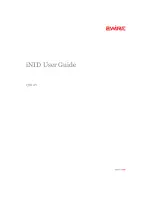
250
# Router B and Router A can ping the IPv4-compatible IPv6 address of each other. For example, ping the
IPv4-compatible IPv6 address on Router B from Router A.
[RouterA-Tunnel0] ping ipv6 ::192.168.50.1
Ping6(56 data bytes) ::192.168.100.1 --> ::192.168.50.1, press escape sequence to break
56 bytes from ::192.168.50.1, icmp_seq=0 hlim=64 time=17.000 ms
56 bytes from ::192.168.50.1, icmp_seq=1 hlim=64 time=9.000 ms
56 bytes from ::192.168.50.1, icmp_seq=2 hlim=64 time=11.000 ms
56 bytes from ::192.168.50.1, icmp_seq=3 hlim=64 time=9.000 ms
56 bytes from ::192.168.50.1, icmp_seq=4 hlim=64 time=11.000 ms
--- Ping6 statistics for ::192.168.50.1 ---
5 packet(s) transmitted, 5 packet(s) received, 0.0% packet loss
round-trip min/avg/max/std-dev = 9.000/11.400/17.000/2.939 ms
Configuring a 6to4 tunnel
Follow these guidelines when you configure a 6to4 tunnel:
•
You do not need to configure a destination address for a 6to4 tunnel, because the destination IPv4
address is embedded in the 6to4 IPv6 address.
•
The source addresses of local tunnels of the same tunnel mode cannot be the same.
•
Because automatic tunnels do not support dynamic routing, you must configure a static route
destined for the destination IPv6 network if the destination IPv6 network is not in the same subnet
as the IPv6 address of the tunnel interface. You can specify the local tunnel interface as the egress
interface of the route or specify the IPv6 address of the peer tunnel interface as the next hop of the
route. For the detailed configuration, see
Layer 3—IP Routing Configuration Guide
.
To configure a 6to4 tunnel:
Step Command
Remarks
1.
Enter system view.
system-view
N/A
2.
Enter 6to4 tunnel interface
view.
interface tunnel
number
[
mode
ipv6-ipv4 6to4
]
N/A
3.
Specify an IPv6 address
for the tunnel interface.
For more information, see
"Configuring basic IPv6 settings."
No IPv6 address is configured for the
tunnel interface by default.
4.
Configure a source
address or source
interface for the tunnel
interface.
source
{
ip-address
|
interface-type
interface-number
}
By default, no source address or
source interface is configured for the
tunnel interface.
The specified source address or the
primary IP address of the specified
source interface is used as the source
IP address of tunneled packets.
5.
(Optional.) Set the DF bit
for tunneled packets.
tunnel dfbit enable
The DF bit is not set for tunneled
packets by default.
6.
Return to system view.
quit
N/A
Summary of Contents for MSR 2600 Series
Page 6: ...We appreciate your comments...
Page 33: ...18 AC vlan1 quit...
Page 118: ...103...
















































